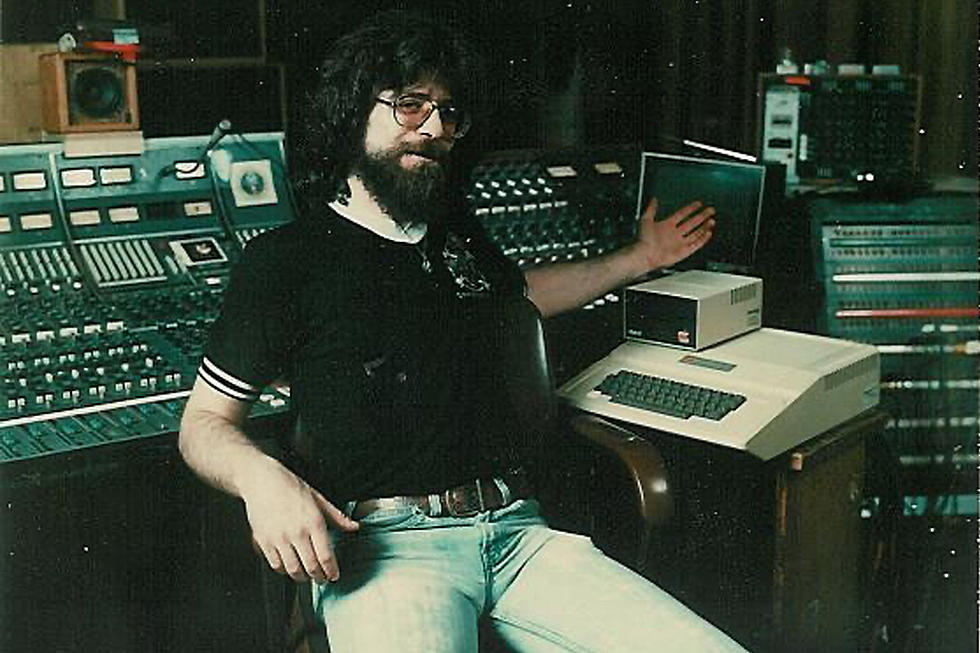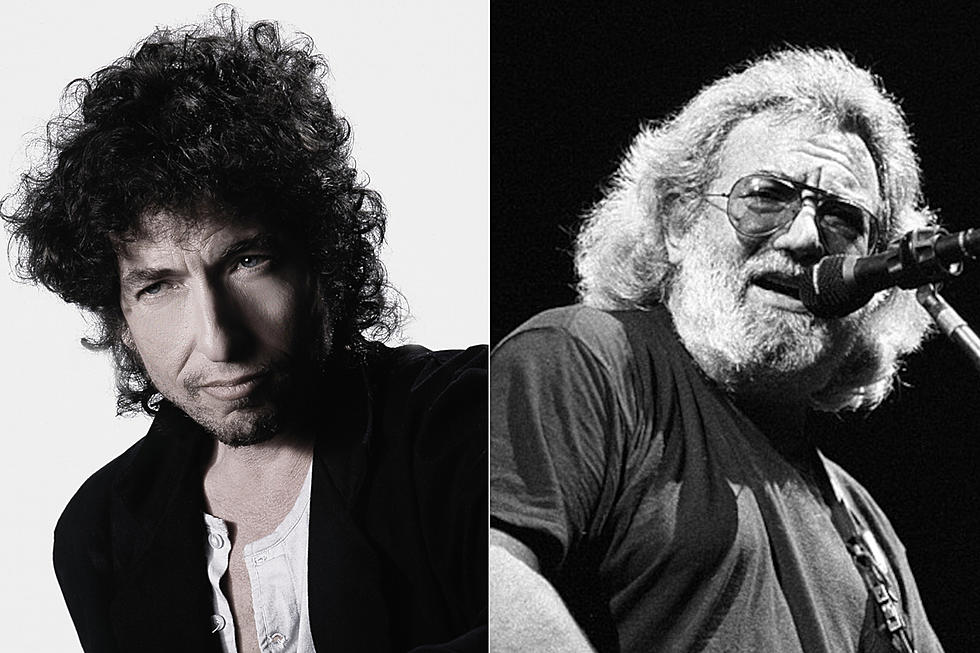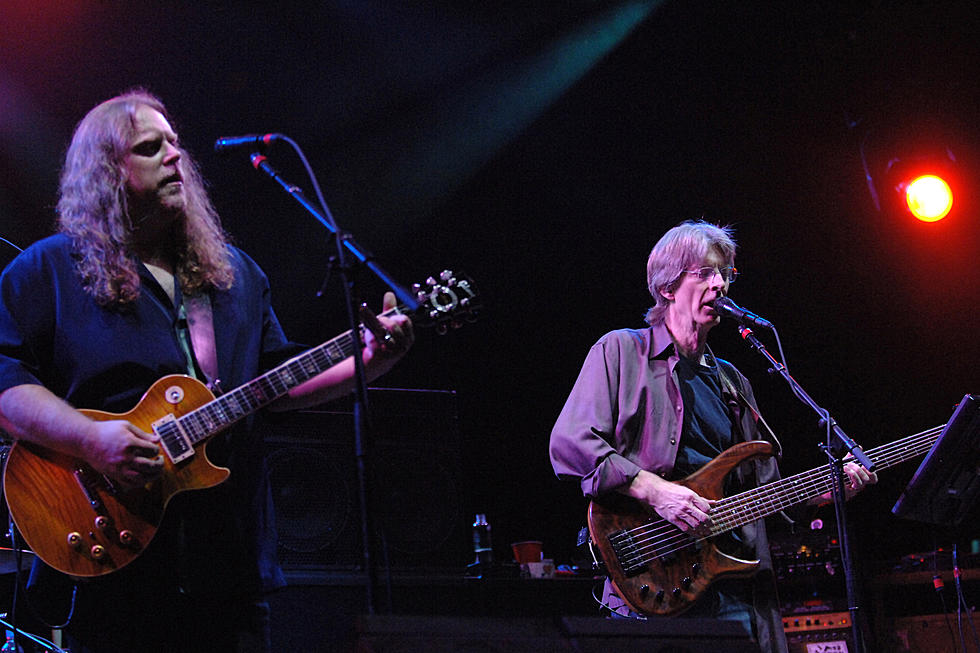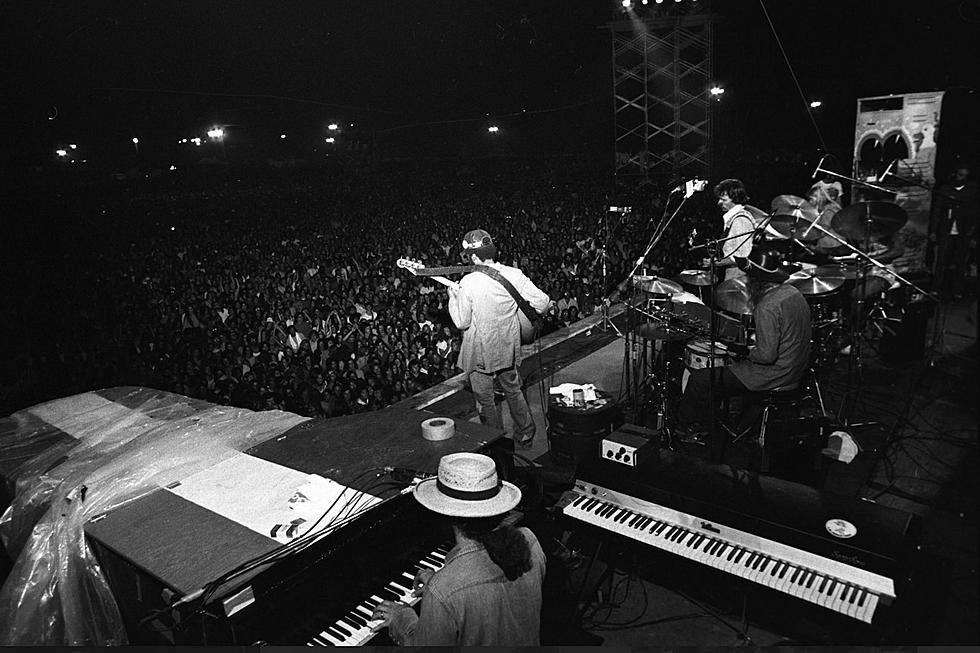
Revisiting the Grateful Dead’s Last Studio Album, ‘Built to Last’
When the Grateful Dead released Built to Last on Oct. 31, 1989, hopes were high for a successful follow-up to their big hit, 1987's In the Dark. But reviews were mixed and the LP, which reached No. 27 on the charts, would be the final studio album released by the Dead.
As on In the Dark, the band's only Top 10 LP, the band recorded “more or less live” without an audience. “But it really didn’t work at all,” guitarist Jerry Garcia told Relix magazine. “We tried it again – we tried at the Marin County Civic Center, and then we did the stretch up at Skywalker Ranch and what we started to discover was that our material was saying something else about itself and that approach was not going to work on this record, and that we’re really looking for something else entirely different.”
The band recorded the basic rhythm tracks for each song and distributed digital copies to each member. Working on their own, they added their parts, which were later mixed by Garcia and producer John Cutler.
A few months after its release, Garcia was optimistic about the LP. “I think that this record is actually tighter than the last record in terms of control. I think the thing is feeling more natural is what we’re after. I think we’re finally getting to it now. We’re learning how to make a record that has some of that Grateful Dead quality of loose tightness, but also has all of the detail that you can have on a record.”
Though two years had passed since their last album, band members admitted that production was rushed to meet Arista’s Halloween 1989 release date.
“We create a deadline somewhere in the impossible, hazy future but it’s a real firm deadline. And then we just ignore it,” guitarist Bob Weir said in A Long Strange Trip. “When the real world’s-gonna-end deadline comes, we keep ignoring it until panic sufficiently motivates us to get to work. Then we make most of our records in about a month and a half. The last two weeks are particularly hellish.”
“I really believe if we hadn’t had a deadline imposed on us by the record company on Built to Last, we probably would’ve gone back and done the whole thing over again more in line with how we did In the Dark, bassist Phil Lesh conceded in The Grateful Dead Reader.
Listen to the Grateful Dead's 'Built to Last'
Why were the counterculture heroes intimidated by Arista's deadline? “Well, we took a big advance on that, which gave them the power.”
The highlight of Built to Last was its only single, "Foolish Heart," a cautionary tale of fickle love. Written by Garcia and Dead lyricist Robert Hunter, the track failed to crack the Top 100 but reached No. 8 on the Mainstream Rock charts.
“I don't present a song to the band until I have a basic rhythmic feel for it, the melody as I imagine it to be sung, and the chord changes,” Garcia told David Gans. “The thing that's interesting about ‘Foolish Heart’ is it doesn't have any pads in it. Nobody's playing chords in the song. Everybody's playing lines, and the lines hook up and tell you all you need to know about the harmonic content of the song. You don't wonder where it's going. It's so beautifully designed, it's like a clock. It's really lovely. It surprised me it came out so interesting and so perfect and so totally its own personality. That's the Grateful Dead in action, really.”
Garcia also contributed the title track and "Standing on the Moon," both co-written with Hunter. Their laid-back pace led Rolling Stone to write, “The dominance of leisurely rhythms leaves too much of Built to Last verging on the frigid.”
Still, Weir’s "Victim or the Crime," written with actor Gerrit Graham, was called “indisputably the Dead's finest achievement in 15 years” by Melody Maker. “It's very dense, and it's angst-ridden to boot,” Garcia told Bonnie Simmons. “It's one of Weir's stunningly odd compositions, but it's also very adventurous. It's uncompromising.”
The song’s opening lyrics, “Patience runs out on the junkie … whatever happened to his precious self control” was controversial in a band whose leader had long struggled with drug addiction. Graham wrote that Lesh, keyboardist Brent Mydland and drummer Mickey Hart argued against using the word “junkie” but the strongest objection came from Dead lyricist John Perry Barlow.
“‘Weir must not – cannot – be allowed to stand up there next to Jerry and sing that line,’ that was the gist of [Barlow's words],” Graham remembered. “Words like ‘inappropriate’ and ‘unsuitable’ were getting heavy workouts. ... So I went to Weir and suggested we throw water on the fire by changing it to ‘flunky’ or ‘luckless’ or ‘jerk-off’ or whatnot, but he wasn't having it ... he’d been singing the song for four or five years by then and liked it just the way it was. He did finally broach the subject with Garcia, and Jerry said, ‘I don't give a fuck, sing what you want.’ How predictable is that?”
Listen to the Grateful Dead's 'Victim or the Crime'
Weir’s other song, "Picasso Moon," was inspired by a nonsense phrase Lesh said one day in the studio. Weir, Barlow and Bob Bralove wrote the energetic tune, which recalls Weir’s "Hell in a Bucket." The tune is propelled by the steady beat of drummers Bill Kreutzmann and Hart.
Deadheads were surprised that Mydland, a relative newcomer with 10 years as a member, had four songs on the LP as opposed to Garcia’s three and Weir’s two.
“You always go with whatever your strong suit is, and in this case it was Brent that had the good songs – I mean, more of ‘em,” said Garcia. “I think it’s more the thing of Brent’s getting to be more comfortable with the band. He sees it being as much his band as everybody else’s. So it’s just the thing of getting over the ‘new guy’ thing.”
Mydland had a history of depression that is reflected in downbeat songs like "Just a Little Light" (“I had a lot of dreams once, but some of them came true / The honey's sometimes bitter when fortune falls on you”); "Blow Away" (“A man and a woman come together as strangers / When they part they're usually strangers still”) and "We Can Run," an indictment of the Earth’s polluters (“But we never tend the garden and rarely we pay the rent / Some of it is broken and the rest of it is bent”).
Barlow, who co-wrote the songs, said he hoped to give the keyboardist a reason to live by contributing lyrics to his music. Many critics liked "I Will Take You Home," a poignant lullaby to Mydland’s daughters that evokes the music of the Eagles.
Less than a year after the album’s release, Mydland was found dead of a drug overdose at the age of 37. Mydland's death and the lukewarm response to the LP may have ensured that Built to Last would be the Dead's final studio album. They carried on as a live act with Vince Welnick as his replacement until Garcia's death on Aug. 9, 1995, and the four surviving members reunited without Garcia for the Fare Thee Well concerts in 2015.
A 2004 reissue of Built to Last included live versions of Rodney Crowell’s "California Earthquake (Whole Lotta Shakin’ Goin’ On)," "Foolish Heart" and "Blow Away."
Grateful Dead Albums Ranked
More From Ultimate Classic Rock









